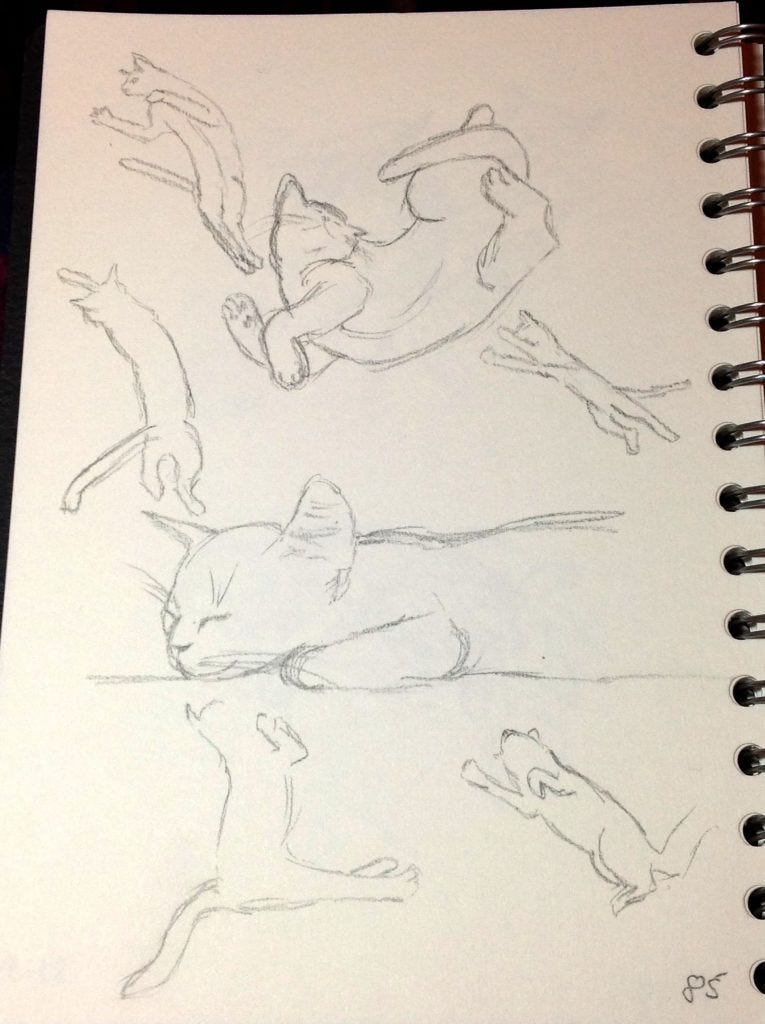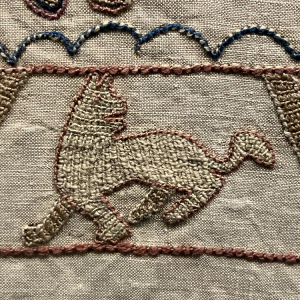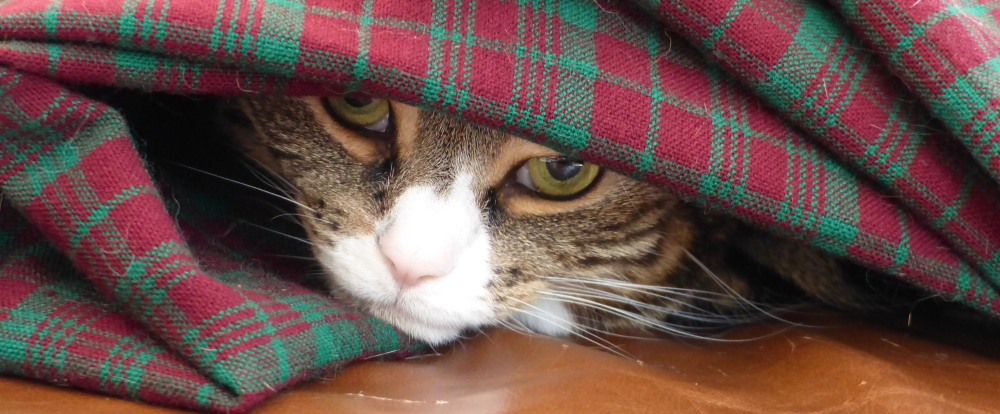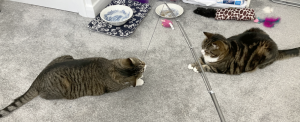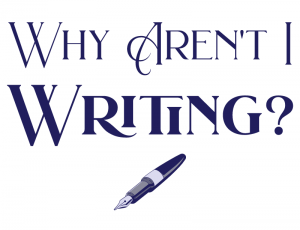Hi there,
Welcome to the first Word Count on Substack!
This week has been more of the usual: editing Tag, polishing off the ethics submission for Fieldwork, and going through Substack’s copious settings. I have a big meeting about Ada Lovelace Day this afternoon, so I’m hoping that by next week’s newsletter I’ll have some clarity about whether I’ve managed to save the Day or whether I’ll be desperately searching for a job. Keep your fingers crossed.
Read these: Older debut authors finally getting a look in
I’ve always been frustrated at the assumption that new writers are always young writers and that so many competitions and awards focus on writers under 30 or 40. Writing, possibly more than any other career, is one you can begin at any age.
So I was delighted to see that the Edinburgh-based literary agency, Jenny Brown Associates, is launching a prize for debut writers over 50. The agency’s website says:
The prize will include a place at a writer’s retreat and mentorship, and for the runner-up, one-to-one mentorship. We will be announcing full details of how to submit in April, and accepting submissions 1–31 May 2023.
Older female writers were also the focus of a piece in The Guardian, where Amelia Hill argued that ‘older, unpublished writers are now at a premium – with radical, edgy women aged into their 80s particularly sought-after’.
Well, I’m not quite that old yet, but it is heartening to see older women’s stories gaining currency, particularly because, as Jenny Brown Associates’ Lisa Highton says, ‘The vast majority of books are bought by women aged 45 and above. They’re a hugely important demographic and increasingly, want to see themselves represented in books.’
As I say about Tag, women who were in their 20s when Buffy first came out are now in their late-40s or 50s, and whilst we’ve aged, Buffy hasn’t. We want to see protagonists like us in all genres, not just crime, book club lit, or historical fiction.
Stop, look, listen: In Writing with Hattie Crisell, S5E44 – Raven Smith
This is a lovely interview with Vogue columnist Raven Smith, who is ‘known for his witty takes on pop culture, modern life and masculinity’. But in amongst all the career chat, Smith reveals an interesting approach to dealing with the fear of the blank page that I mentioned in my first post on Why Aren’t I Writing?.
Instead of doing battle with his first paragraph, Smith uses dictation to get his initial thoughts down so that when he comes to writing, he starts with something to edit. You can’t rewrite words you haven’t written, so this is a good approach for anyone who really struggles with getting going.
Event: Big Comedy Conference
I’m excited to have a ticket for the Big Comedy Conference in London on 22 April. Fieldwork will be a comedy drama and whilst I know I’m good at drama, I haven’t felt very comedic recently. I used to do stand-up comedy, way back when that was the new rock ’n roll, but terrible stage fright incapacitated me for days before a gig. I’m hoping that this conference will entice those comedic tendencies back into the front of my mind from whatever dark crevice they’ve been lurking in.
Read this, two: Newsletter lessons
If you write a newsletter (or newsletters – mine seem to have bred!), then this list of 35 things that veteran newsletter writer CJ Chivers has learnt over the last 35 years will be useful. There are a lot of really good lessons there, so this is one to bookmark and refer back to regularly.
WAIW?: The year I Jedi mind tricked myself into creativity
My writer’s block was so bad in 2016 that I decided to spend the next year doing literally anything else instead. Sometimes, you have to play the long game.
Obligatory cat picture
Never, ever start an argument with Grabbity.
That’s it for this week!
All the best,
Suw
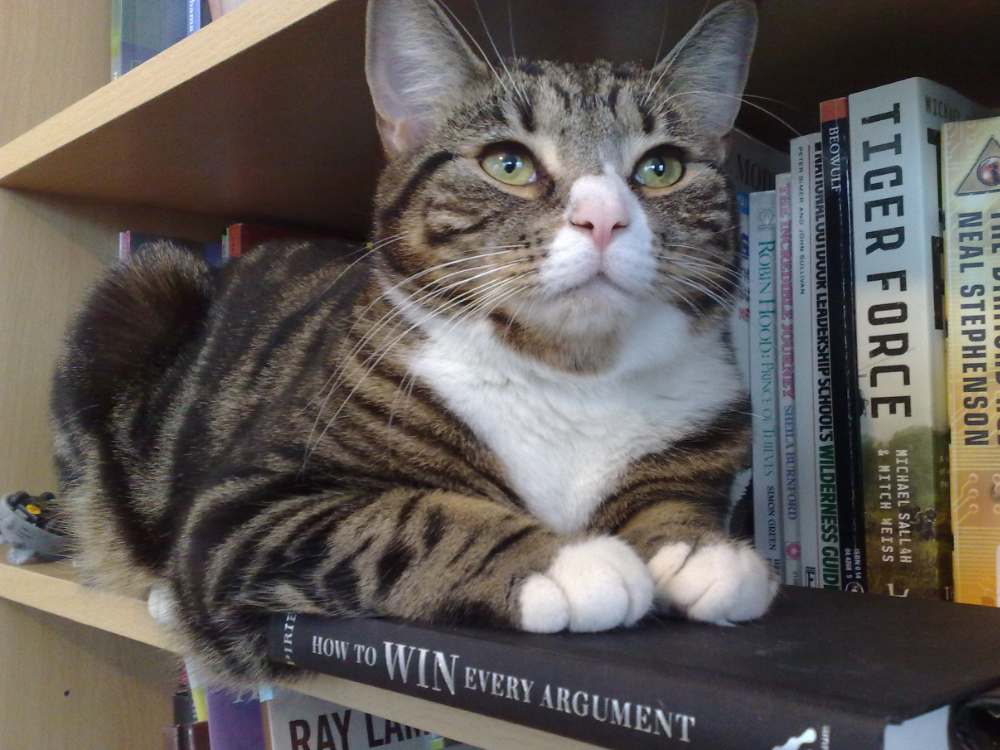
{ Comments on this entry are closed }
